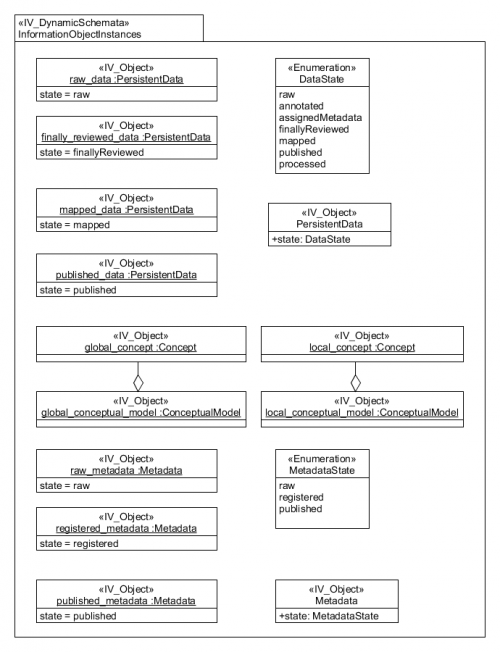|
Information object instances are used to define valid instances of information objects. As explained earlier an information object can have several state transitions. An information object instance is a model of an information object at a particular state.
The diagram on the right shows examples of different object instances. The main difference with information object is that the status of the information object instances is assigned a value from the list of allowed states.
Information objects instances are needed for two purposes:
- to show the data state changes as effects of actions;
- to show the relations between valid states of related data types, for instance that reaching the "published" requires a specific series of previous states which can be traced for QA and provenance validation.
The diagram also includes two types of conceptual models: "local conceptual model" and "global conceptual model".
Global conceptual model
A set of concepts accepted by a data sharing community.
Global conceptual models contain global concepts. Examples of these types of models are global Thesauri like GEMET / EuroVoc / AGROVOC or global ontologies like Gene Ontology.
Local conceptual model
A set of concepts locally agreed by a limited user community, such as the members of a research institution.
A local conceptual model contains concepts which have a specific meaning according to the community using them for instance local definitions of person, institute, or data.
A conceptual model can be local or global depending on the size of the community which commits to it. Local conceptual models can contain concepts borrowed from global conceptual models. Alternatively mapping rules can be established to determine equivalences between global and local concepts.
|
